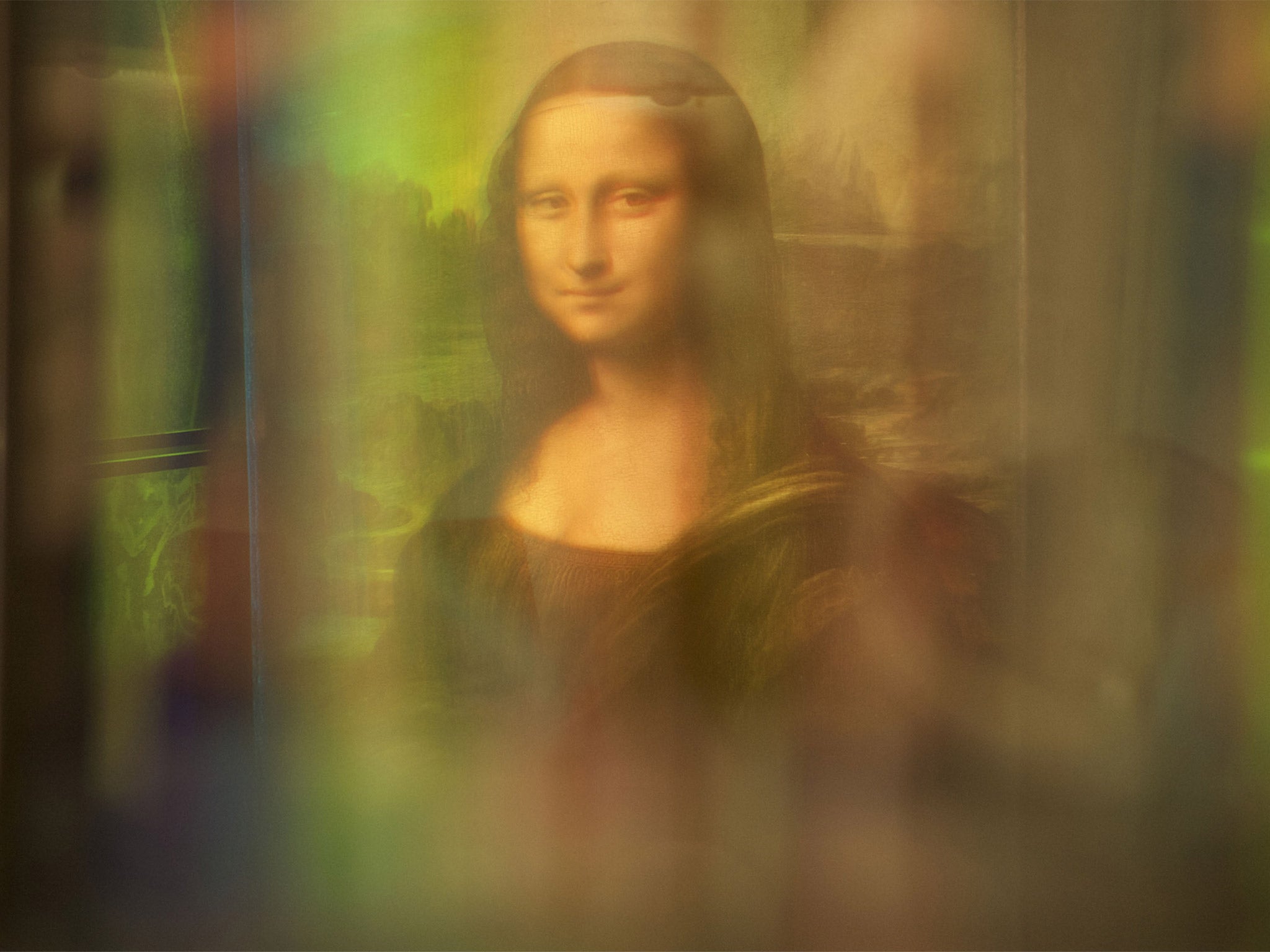Secrets of the Mona Lisa: French scientist Pascal Cotte claims to know secret behind world's most famous smile
Mr Cotte claims to have found the image of another woman beneath layers of pigment

Your support helps us to tell the story
From reproductive rights to climate change to Big Tech, The Independent is on the ground when the story is developing. Whether it's investigating the financials of Elon Musk's pro-Trump PAC or producing our latest documentary, 'The A Word', which shines a light on the American women fighting for reproductive rights, we know how important it is to parse out the facts from the messaging.
At such a critical moment in US history, we need reporters on the ground. Your donation allows us to keep sending journalists to speak to both sides of the story.
The Independent is trusted by Americans across the entire political spectrum. And unlike many other quality news outlets, we choose not to lock Americans out of our reporting and analysis with paywalls. We believe quality journalism should be available to everyone, paid for by those who can afford it.
Your support makes all the difference.The identity of the Mona Lisa has left art lovers and scholars speculating for centuries. Now a French scientist believes he has unlocked the secret of what lies behind the world’s most enigmatic smile.
After a decade of studying the acclaimed Leonardo da Vinci portrait and using groundbreaking techniques to scan the painting, Pascal Cotte claims to have found the image of another woman beneath layers of pigment.
And he argues that this hidden portrait is the likeness of the Florentine merchant’s wife long suspected to be Leonardo’s model for Mona Lisa. The study shows evidence that Leonardo first painted the portrait of a different woman, he says.

Mr Cotte believes the marks discovered show the features of the real Lisa Gherardini, widely thought by experts as the subject of the Mona Lisa, and that the finished work is of a different woman.
“When I finished the reconstruction of Lisa Gherardini, I was in front of the portrait and she is totally different to Mona Lisa today. This is not the same woman,” Mr Cotte says in the BBC2 documentary, Secrets of the Mona Lisa, to be to be broadcast on 9 December.
Mr Cotte and art historian Andrew Graham-Dixon, who presents the documentary, labelled the discovery as groundbreaking. Yet, art historians and experts said too much could be read into such technical images, and the digital recreation of the original portrait was unreliable.
Leonardo painted the portrait between 1503 and 1517. It is believed he was initially commissioned by Lisa’s husband, but failed to deliver the painting and later reworked it.
Mr Cotte has pioneered the layer amplification method, which uses 13 different wavelengths of light bounced off the pigment to produce images throughout different layers of the painting. “My scientific imagery technique... reveals secrets that have remained hidden for 500 years,” he says.
Mr Cotte believes he has found three different portraits underneath the finished work. One is an early study of a head and another is a Madonna-style portrait. The third, he believes, is the original portrait of Lisa Gherardini..
Martin Kemp, emeritus professor of the history of art at the University of Oxford, said: “It’s extraordinary and notable data and perfectly clear the picture has undergone substantial changes. Leonardo did that to other paintings; he was a remorseless fiddler.”
But he added: “That there are two or three quasi-finished pictures under there that you could find if you peeled back the layers, is not really supportable. Leonardo’s process of composing pictures was very fluid. Things came and went.
One anonymous art historian said: “The scientist has been spending too much time on Photoshop.”
‘Secrets of the Mona Lisa’, BBC2 9pm
Join our commenting forum
Join thought-provoking conversations, follow other Independent readers and see their replies
Comments